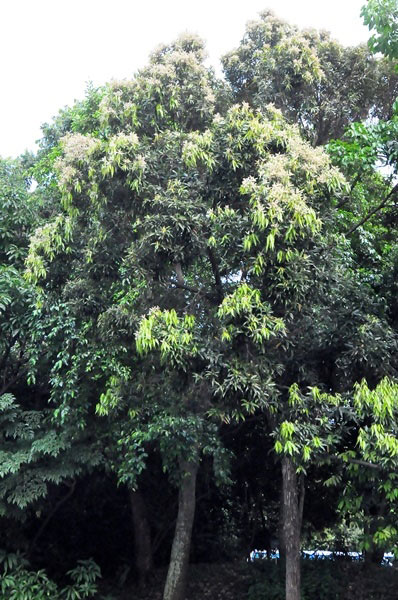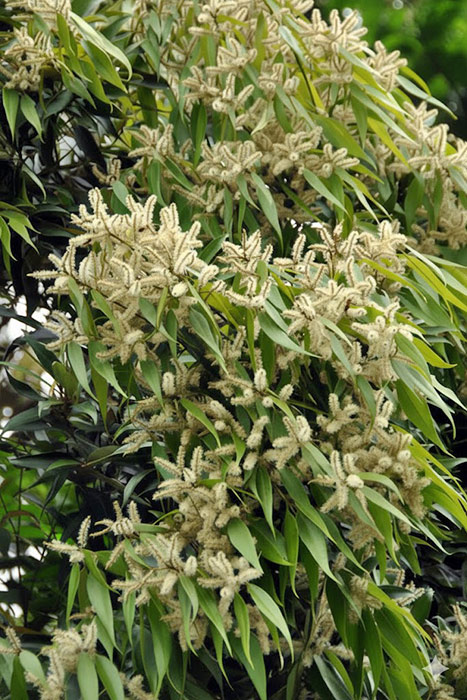Lithocarpus amygdalifolius
The almond-leaved tanoak is mainly distributed in mid- to high-altitude forests above 1,800 meters in Taiwan. Surprisingly, native almond-leaved tanoak can also be found at altitudes below 500 meters on the Hengchun Peninsula, the southernmost tip of Taiwan.
The distribution of plants is typically influenced by environmental factors such as temperature and humidity caused by altitude, forming vertical distribution zones. However, the Hengchun Peninsula's unique geographical location is subject to strong northeast monsoon winds from the Pacific Ocean during winter, carrying abundant moisture and blowing for extended periods, resulting in the windward slopes of the Hengchun Peninsula exhibiting low temperatures and high humidity despite their relatively low elevation. This creates an environment similar to that found in higher-elevation regions, allowing plant species that typically thrive at higher elevations to survive and thrive here. This phenomenon is known as “vegetation compression.” The distribution of the almond-leaved tanoak in the Nanren Mountain area of Kenting is a typical example of this phenomenon.
The almond-leaved tanoak is named for its leaves, which resemble those of an almond tree. The leaves are leathery and have serrated edges, enabling the plant to thrive in harsh environments. The almond-leaved tanoak in the Monsoon Rain Forest Area of our Botanical Garden typically blooms around the end of March each year. However, waiting for the fruit to fully develop is a lengthy process, and by the time mature fruit appears among the branches and leaves, it is often already year-end. Although, like other Fagaceae plants, it has a hard nut supported by a cup-shaped or disc-shaped structure at the base called a “cupule,” the cupule of the almond-leaved tanoak almost completely encloses the nut, leaving only a small opening at the top. This gives the fruit a stone-like appearance, and even when it matures and falls to the ground, it remains tightly enclosed. However, in the wild forests of Taiwan, fruits that have fallen to the ground often show signs of having been eaten by animals.

